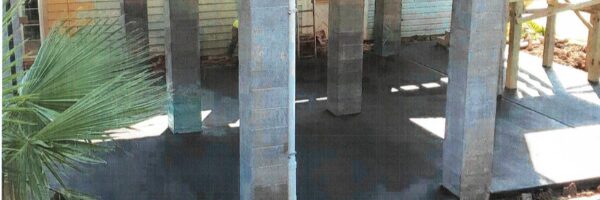In general, DIY home improvement projects allow us to save a lot of money and gain some experience fixing different things around our homes. However, a DIY approach isn’t the best option when it comes to home elevation. That’s because lifting a house involves a series of techniques and steps that only a certified and experienced contractor knows how to perform. In order to understand why you should never attempt to jack up your own home, let’s take a look at what’s involved in the elevation process.
Home Elevation Techniques
In most cases, home elevation implies the separation of the home’s frame and walls from the foundation. The contractor uses hydraulic jacks and temporary supports to raise and hold the home up until driven concrete piers or pile guard piers are installed. Then, the existing foundation is extended or a new foundation is built below the slab.
While this technique works particularly well for homes that sit on open foundations, a variation of this method is used for homes placed on closed, slab-on-grade foundations. In these homes the slab is part of both the foundation and flooring systems, the masonry is left attached to the slab. Consequently, the home is lifted together with the slab.
An alternative technique recommended for masonry homes built on closed foundations is to remove the roof and then elevate the living space. To do that, you need to extend the walls of your home upward and then raise the floor OR just add a second story. The abandoned ground level can be converted to a compliant enclosure and used for storage, parking, or a different purpose. Regardless of the home elevation method recommended, lifting your living area above the BFE basically means that only the foundation or abandoned ground level remains exposed to potential flooding.
The Dangers of DIY Home Elevation
Nowadays, everyone has access to plenty of helpful tutorials that can make different home maintenance tasks easy to learn. But we need to be realistic about what’s within our skillset and tool inventory. Maybe a skilled DIYer can perform some tasks, such as replacing a faucet or repairing a pipe. On the other hand, a lack of appropriate knowledge and tools could turn a more complex project, like lifting a home, into a disaster. Here are the most important reasons why you shouldn’t attempt to elevate your home on your own even if you’re a skilled DIYer.
Failure to Perform a Comprehensive Foundation Inspection
Many homeowners, who decide to jack up their own homes, fail to identify existent foundation issues and the potential problems that could occur during the lifting process. As a result, most of them choose the wrong elevation techniques, which often lead to major structural damage in their homes.
Although a series of signs allow you to identify different foundation issues, you might fail to correctly assess the overall condition of your foundation. Besides the fact that foundation failure might be imminent, quantifying the impact that specific operations (e.g. separating the home’s frame and walls from the foundation or lifting the home together with the slab) could have on your home is more difficult than it seems. The easiest way to avoid extensive damage and costly repairs are to have a foundation inspection performed by a structural engineer.
Skipping Important Steps
Most DIYers don’t have the professional training and experience to successfully carry out a home elevation project. Because many vital aspects aren’t mentioned in tutorials, you may overlook specific operations or speed up some important steps, which could ultimately cause structural damage to your home. As an example, lifting a house just one inch is a slow, methodical process that shouldn’t be rushed. Older homes, which typically weigh more because of their sturdier frames and plaster construction, might be lifted as little as 1/8 of an inch per day. That’s because they need plenty of time to settle between lifts. Raising a house faster than recommended in order to speed up the process could lead to expensive damage.
Lifting Your Home Can Be Dangerous to You and Your Loved Ones
Jacking up your own home poses a huge safety risk to yourself, family members, and anyone else who comes in close proximity to your property. When the tools, machines, and heavy components that are typically used during the home elevation process aren’t handled or stored correctly, they could inflict serious injuries. What’s more, if you fail to elevate your home properly, it may not be safe for living in the long term. This may put your life and the life of those living in your home at risk.
Before attempting to elevate your home on your own, it’s important to remember that every house and situation is different. Because individual site conditions and home design often require a different approach, there isn’t a one-size-fits-all method for elevating homes. As a result, the only way to control potential hazards, reduce the risk of failure, and avoid the extra costs is to enlist the services of our experienced professionals who have the right training, skills, equipment, and technology to do the job correctly and safely.

